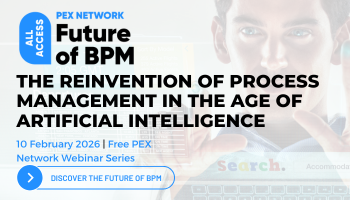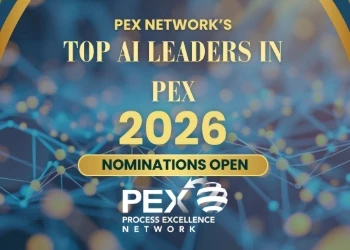Userlane & Microsoft bring agentic assistance to the enterprise
Userlane is collaborating with Microsoft to bring agentic assistance to the enterprise with the launch of its AI assistant in Microsoft 365 Copilot
Add bookmark
Digital adoption platform (DAP) provider Userlane is collaborating with Microsoft to bring agentic assistance to the enterprise. Userlane announced the launch of its artificial intelligence (AI) assistant in Microsoft 365 Copilot.
Userlane’s AI assistant is based on Microsoft Azure AI Foundry’s Azure OpenAI in Foundry Models, ensuring employees can easily handle complex processes and providing agentic AI assistance across an enterprise’s complete software portfolio.
Join the PEX Network community

Don't miss any news, updates or insider tips from PEX Network by getting them delivered to your inbox. Sign up to our newsletter and join our community of experts.
Learn MoreAgentic assistance delivers timely, contextual guidance
Userlane empowers organizations to maximize the value of their software investments by delivering a comprehensive view of software usage and providing intelligent, in-the-moment support to users.
This dual approach helps reduce digital friction, boost productivity and minimize costs associated with training, support and unused licenses, according to a press release. By integrating Azure OpenAI, Azure Kubernetes Service and Azure Database for PostgreSQL, Userlane’s DAP ensures AI-driven solutions are secure, scalable and fully compliant.
“Our work with Microsoft has enabled us to embed AI assistance directly within enterprise applications,” said Hartmut Hahn, CEO of Userlane. “By integrating our AI assistant with Azure OpenAI Service and Copilot, we help users access timely, contextual guidance – so they can focus on outcomes, not on figuring out software.”
Userlane’s solution on Microsoft Azure demonstrates how AI can simplify software usage across an organization, added Tobias Schild, data and AI lead German midmarket at Microsoft. “This approach delivers measurable results while reducing complexity for both businesses and their employees.”
Register for All Access: AI in Business Transformation 2025!
The emergence of agentic orchestration
Agentic orchestration has emerged as the genuine go-to approach for enabling more intelligence, adaptability and genuine context-awareness. It introduces a different model wherein autonomous, context-aware AI agents coordinate, optimize and evolve specific enterprise workflows in real time.
“As enterprises shift towards AI-native operating models, agentic orchestration is poised to become the strategic control layer which governs digital work, thereby uniting the holy trinity of process automation, decision intelligence and adaptive learning, all within a single unified orchestration fabric,” said Apoorva Dawalbhakta, associate director of research at QKS Group.
This shift isn’t just technical; it is deeply strategic in nature, Dawalbhakta added. As enterprises become increasingly digital, distributed and dynamic, the orchestration layer needs to evolve from a back-end utility to a real-time decision and control engine.
“One thing is for sure – agentic orchestration isn’t just a trend anymore. It is a definite, crucial and imperative turning point,” according to Dawalbhakta. “It transforms the entire concept of automation from a mere ‘cost-efficiency tool’ into a full-fledged ‘enterprise nervous system.’ It further enables systems to act not just quickly, but wisely as well. It repositions ‘orchestration’ as a key strategic enabler of intelligence, resilience and absolute adaptability.”
All Access: Future of BPM 2026

You asked, and we listened. Business process management (BPM) remains the cornerstone technology for driving organizational transformation, according to the survey results featured in the latest PEX Report. As we look toward 2026 and beyond, generative AI, agentic AI, and intelligent process orchestration are redefining how processes are designed, executed, and optimized. BPM is your key to adapting swiftly and effectively in this new era.
PEX Network is bringing together industry leaders, technology innovators, and thought leaders to answer your biggest questions and explore the advancements reshaping business today. And you're invited. Register for free to save your spot now!
Register Now






















